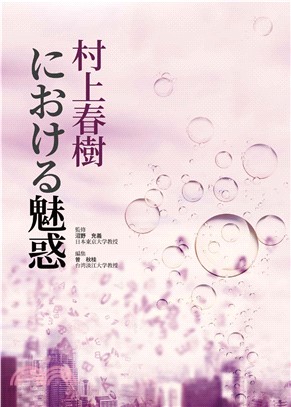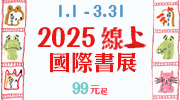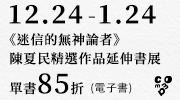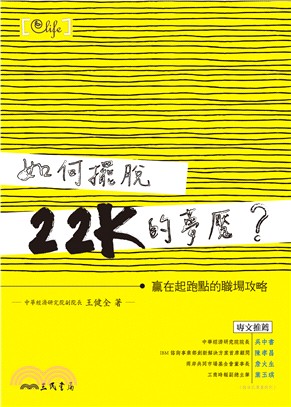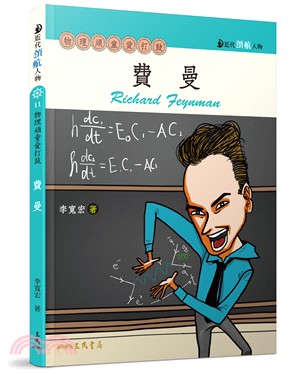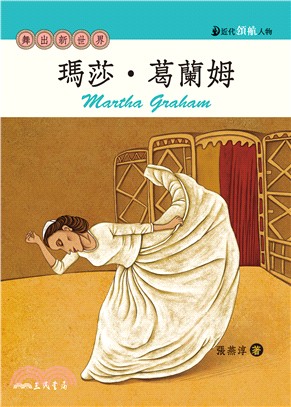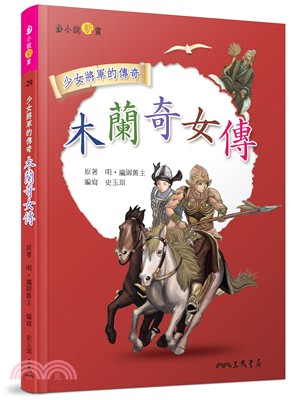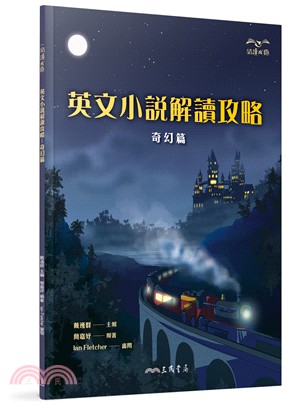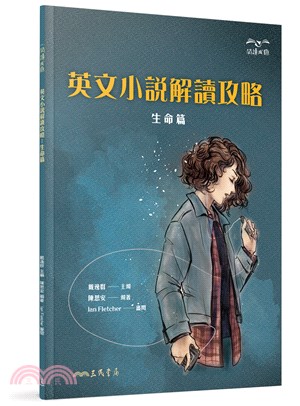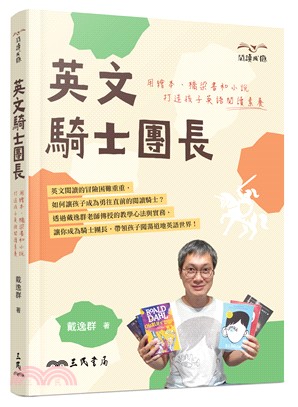村上春樹における魅惑(電子書)
商品資訊
商品簡介
話說村上春樹文學中的「魅惑」,是無人能擋。將從中感受到的魅力跟誘惑,透過文本分析或研究來呈現,是可以彰顯而出。村上春樹1979年出道至今,有長、中、短篇等無數的小說創作、雜文小品、翻譯作品,主題看似雜亂、零散。但若跨越創作形式,對作品有感之處來循線閱讀的話,村上春樹文學是自成一格,任何人都能體感出其中蘊含著無限的魅力跟誘惑。
作者簡介
日本東京大學教授
序
研究中心為深化村上春樹學,以全方位的角度切入,推廣獨特的學術魔力,辦理微電影競賽、經典名著多國語言朗讀比賽、作品導讀、開設講座及遠距課程等多樣性的活動,其中「非常村上春樹」磨課師課程,榮獲2017 年第三屆學習科技金質獎,努力成果深獲肯定。
連續7 年豐富的會務經驗,盡其所能分享研究成果,研究叢書亦從近年的村上春樹中的「兩義性」,「秩序」,演進為今年第五輯的「魔力」。適逢淡江第五波,成立「熊貓講座」邀請大師講學之際,如能促成村上春樹本人及知名學者蒞校交流,必將掀起另一波研究風潮,特為文誌之,以資鼓勵。
淡江大學校長 張 家宜
目次
Murakami Haruki’s“ Charm” and the“ Empty Narrative”Matthew C. STRECHER 1
「人間ならざる者たち」の魅惑と恐怖─村上文学における動物(「象の消滅」を中心に)─沼野 充義 19
魅惑するナカタさんワールド 金水 敏 43
村上春樹と芥川龍之介─〈闇〉〈沈黙〉の「魅惑」、近代文学における一つの水脈─宮坂 覺 61
自己に魅せられる物語
─『騎士団長殺し』と寓意の脱落─柴田 勝二 83
投稿論文
『パン屋を襲う』論─システムをめぐる村上春樹文学の魅惑─鄒 波 105
村上春樹『スプートニクの恋人』における魅惑─「ぼく」とすみれとミュウ─荻原 桂子 135
村上春樹作品の語りの構造─額縁構造物語の産み出す世界の「魅惑」─落合 由治 163
火付けの魅惑─村上春樹「納屋を焼く」論─佐藤 敬子 189
魅惑の傷痕─村上春樹「木野」論─齋藤 正志 211
『女のいない男たち』の延長線として読む『騎士団長殺し』の「魅惑」─東日本大震災への思いを馳せて─曾 秋桂 233
『騎士団長殺し』─物語世界の新たな魅惑─浅利 文子 253
村上春樹『海辺のカフカ』と『竹取物語』─メタファーの魅惑の原点をめざして─賴 振南 283
『1Q84』・「ふかえり」の魅惑を創出する日本語の特性─英語・韓国語・華語との比較を通じて─
住田 哲郎 305
『遠い太鼓』の魅惑─村上春樹の滞欧体験─賴 錦雀 335
人名索引 359
書名・作品名索引 365
事項索引 377
書摘/試閱
Murakami Haruki's“ Charm ” and the“ Empty
Narrative ”
Matthew C. Strecher
1. Introduction
Why does it so often seem as though Murakami Haruki is writing his novels about me, about my life? Why is he read so enthusiastically, all over the world?
These are the two most common questions asked of me as a scholar of Murakami Haruki literature. The former question comes, generally, from undergraduate students encountering these works for the first time, while the latter is usually put by bewildered newspaper reporters and NHK producers, especially in early October as the Nobel Prize for literature is about to be announced. On some reflection, it becomes clear that these two questions are related to one another, and also to the concept of miwaku 魅惑, which is sometimes translated into English as “charm,” but may also be rendered as “fascination.” This essay will attempt to explain this fascination from the perspective of what we shall call the “empty narrative,” a narratological structure
in which an open space is developed within a novel or story into which the reader is not merely encouraged, but virtually required to insert her or his own personal narrative. It is a mode of reading that bears close relation to the reading strategies of reception theory, one in which a dialogic relationship is established between author and reader. Unlike reception theory, however, we will consider this relationship to develop not between author and implied reader ( cf. Iser 1980 ), but between Murakami and his actual readers, throughout the world. The result, as we shall see, is the development of a new fictional mode capable of crossing all borders—cultural, linguistic, social, generational, religious—to become something like a “universal text.” This, to take but a single step further, will lead us to the beginnings of a theory for a truly “global” literature.
2. All You Need Is Empathy
For some readers—this one included—this ability to develop an intuitive bond with the author is immediately attractive, and contributes to the sense of fascination, but also of participation in the text.
Consider, for instance, one of Murakami’s earliest short stories, “Binbō na obasan no hanashi” ( 1980; Story of a poor aunt ), in which the protagonist has a momentary flash in his mind of a bedraggled, middleaged woman that no one seems to notice or to want around. Then one day he realizes that there is a pale image of such a person clinging to his back. She is unobtrusive, uncomplaining, and, in her position on his back, not even visible to the narrator. Nor is she a mere hallucination, for others can see her too, though she takes on different forms for them—unique forms that connect intimately with their own personal experiences. What is a “poor aunt” for the narrator is a badly disfigured schoolteacher for another, a dog who died pathetically of cancer for yet another. For one viewer she is his own mother. In Jungian terms she is a sort of visible archetype, one who probably represents a vague sort of guilt toward those who are forgotten or ignored or devalued. Without too much difficulty we recognize this aspect of the “poor aunt,” and ( again, without too much difficulty) project our own vision onto her. Perhaps she will appear to one reader as a classmate in school whom
everyone bullied; or the homeless man on the corner who everyone passes, but no one ever looks at. Readers understand her intuitively, because she can and must become whatever each reader needs her to be.
The process of reading here is both natural and elegant. We read Murakami’s narrative, and then ( without necessarily realizing it ) superimpose our own reality on top of it, placing ourselves into the shoes of the narrator. In this sense, Murakami really is writing about us, the reader.
This is nothing more or less than a bond of empathy that develops between author and reader through the special gaze of the nameless, nondescript narrator, “Boku.” Empathy—expressed in Japanese as
kyōkan 共感 or kanjō i’nyū 感情移入—is of course one of the most fundamental tools for reading effectively, a process of entering the mind of the protagonist, sometimes of other characters, and in the
best instances, of the author. As such, empathetic reading cannot be called a phenomenon unique to Murakami fiction. Rather, we may describe the degree of empathy that emerges between text and reader, the level of dialogue that develops between ourselves and the author. If, as reception theory suggests, the act of reading is grounded in this dialogic relationship, then a literary structure that facilitates this sort of “give-and-take,” this meeting of the minds, is essential. The question then arises: on what level, and from what position, do author and reader approach one another? To what extent does the author—and the structural framework on which he or she constructs the narrative—permit the intrusion of the reader? Put in slightly simpler terms, how much does a given author or text permit the reader to re-write that text in her or his own image? It is not difficult to see that the higher the degree of latitude given readers, the greater the possibilities for empathetic reading—for reading/writing—will become.
主題書展
更多書展今日66折
您曾經瀏覽過的商品
購物須知
為了保護您的權益,「三民網路書店」提供會員七日商品鑑賞期(收到商品為起始日)。
若要辦理退貨,請在商品鑑賞期內寄回,且商品必須是全新狀態與完整包裝(商品、附件、發票、隨貨贈品等)否則恕不接受退貨。



